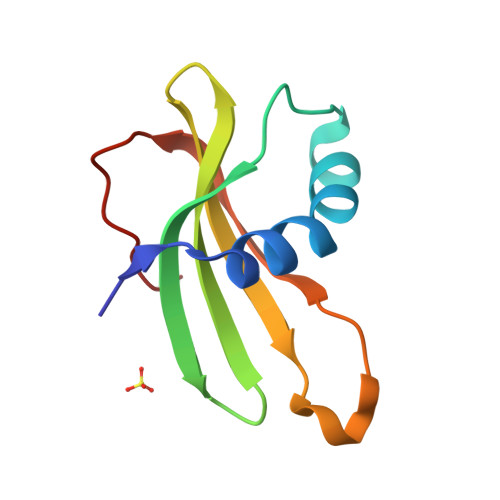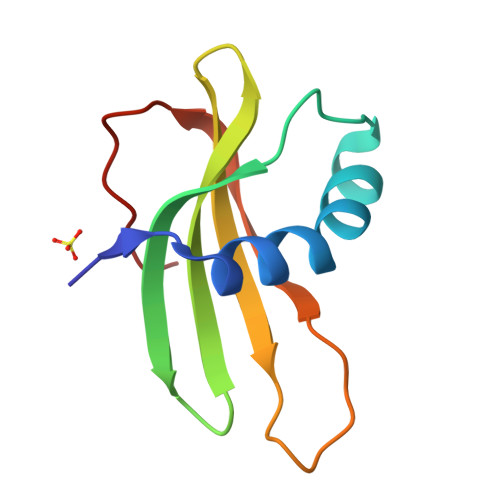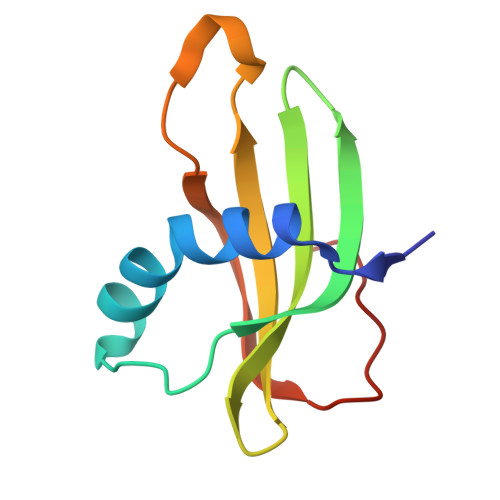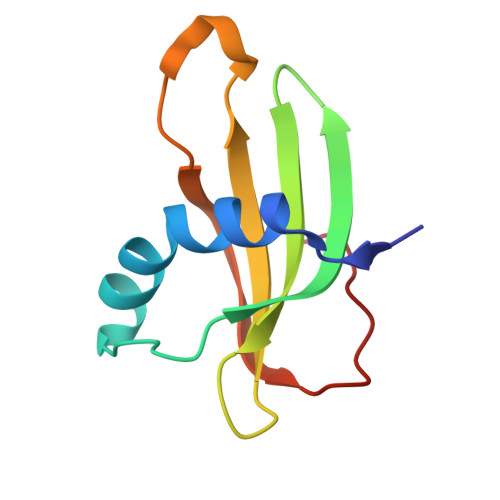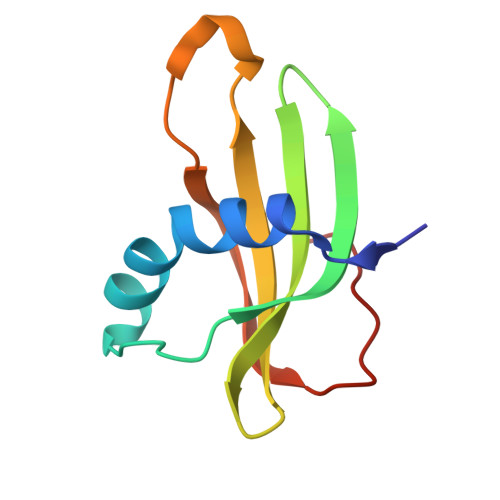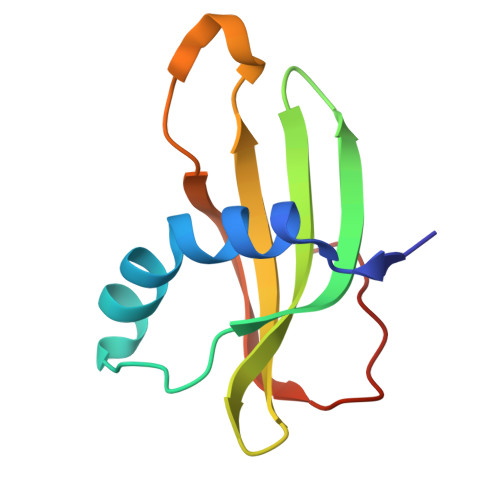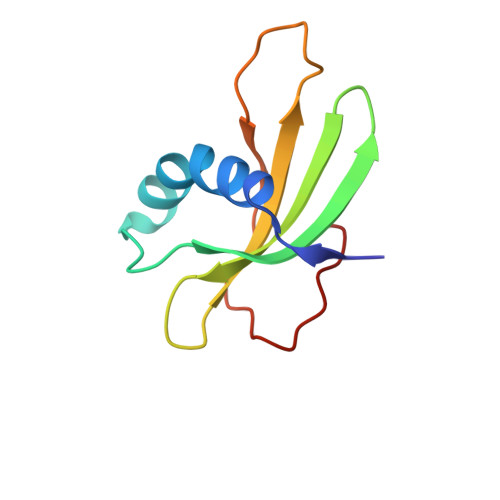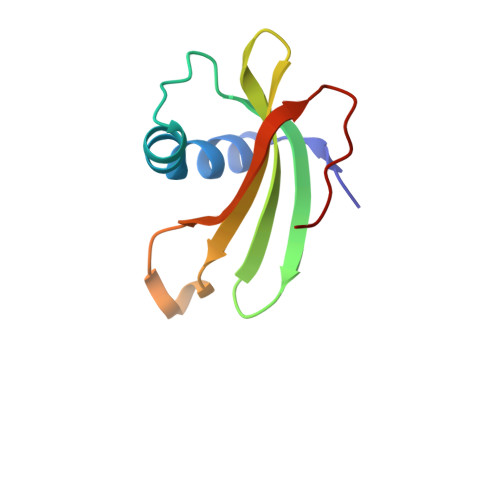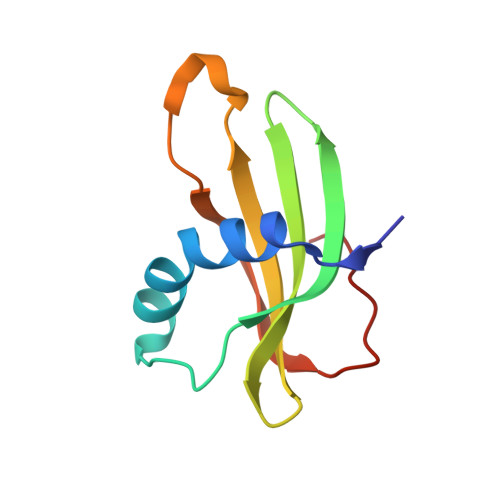Partial rotational lattice order-disorder in stefin B crystals.
Renko, M., Taler-Vercic, A., Mihelic, M., Zerovnik, E., Turk, D.(2014) Acta Crystallogr D Biol Crystallogr 70: 1015-1025
- PubMed: 24699646
- DOI: https://doi.org/10.1107/S1399004714000091
- Primary Citation of Related Structures:
4N6V - PubMed Abstract:
At present, the determination of crystal structures from data that have been acquired from twinned crystals is routine; however, with the increasing number of crystal structures additional crystal lattice disorders are being discovered. Here, a previously undescribed partial rotational order-disorder that has been observed in crystals of stefin B is described. The diffraction images revealed normal diffraction patterns that result from a regular crystal lattice. The data could be processed in space groups I4 and I422, yet one crystal exhibited a notable rejection rate in the higher symmetry space group. An explanation for this behaviour was found once the crystal structures had been solved and refined and the electron-density maps had been inspected. The lattice of stefin B crystals is composed of five tetramer layers: four well ordered layers which are followed by an additional layer of alternatively placed tetramers. The presence of alternative positions was revealed by the inspection of electron-density score maps. The well ordered layers correspond to the crystal symmetry of space group I422. In addition, the positions of the molecules in the additional layer are related by twofold rotational axes which correspond to space group I422; however, these molecules lie on the twofold axis and can only be related in a statistical manner. When the occupancies of alternate positions and overlapping are equal, the crystal lattice indeed fulfills the criteria of space group I422; when these occupancies are not equal, the lattice only fulfills the criteria of space group I4.
Organizational Affiliation:
Department of Biochemistry and Molecular and Structural Biology, Josef Stefan Institute, Jamova 39, SI-1000 Ljubljana, Slovenia.









